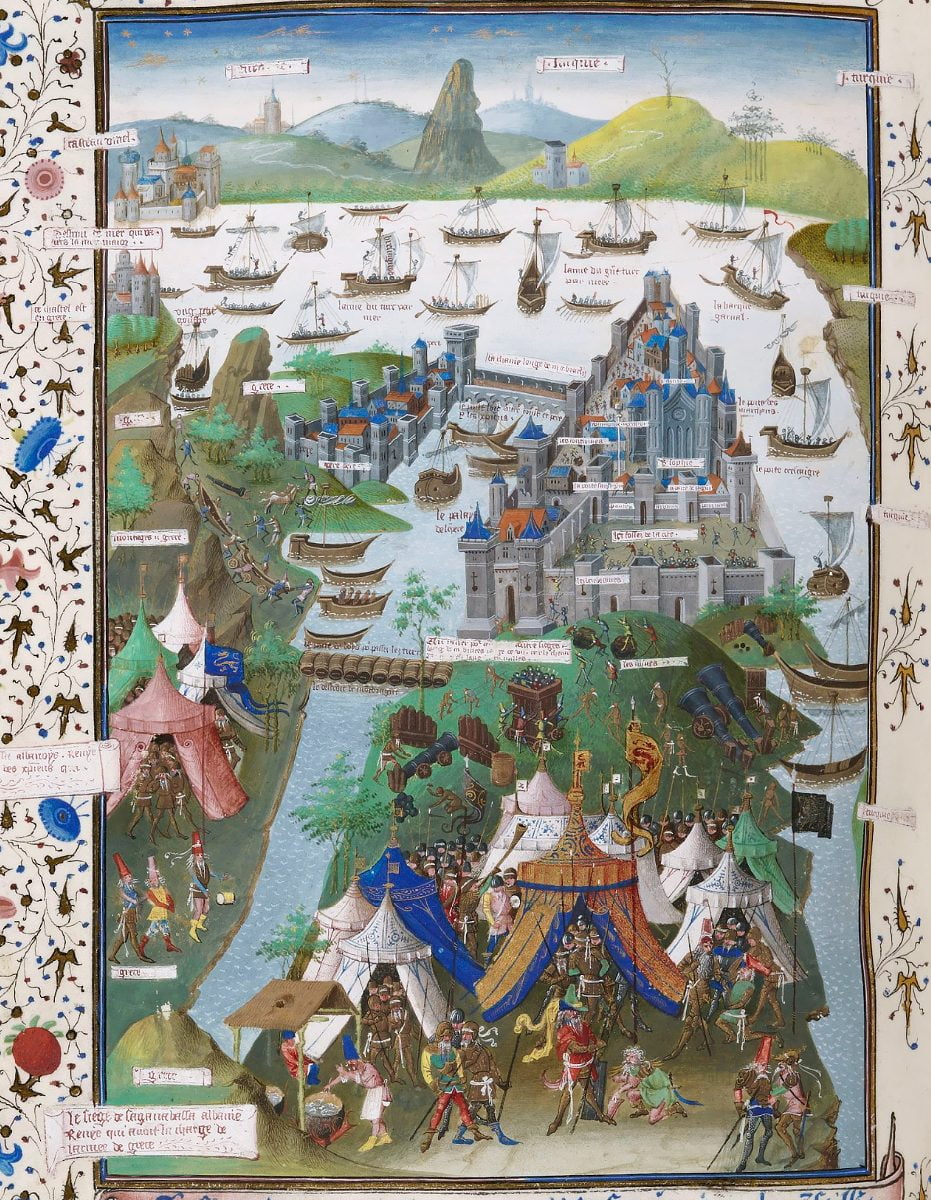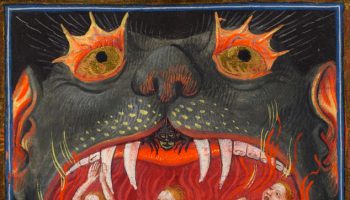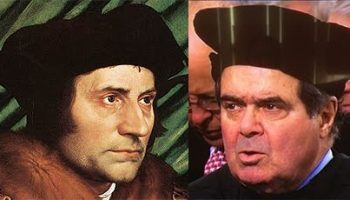COVID-19 is a global problem, but the reactions to it have differed vastly from country to country. Like in many countries, the pandemic caused a nationwide shutdown in Russia. When addressing his nation about the virus, Vladimir Putin placed it among the ranks of Russia’s historic enemies he said as way of encouragement to his national audience in early April of 2020:
“Our country has been through serious tests more than once: when tormented by the Pechenegs and the Cumans, Russia coped with everything,”

But who were these peoples? The Pechenegs (sometimes spelled Patzinaks) and the Cumans were two groups of nomadic Turkic peoples who controlled the vast steppe region north of the Black, Azov, and Caspian Seas from the ninth to the thirteenth century.
But why did the Russian president—who usually chooses his words carefully—bring these medieval nomads up at all? To most Russians today, both nomadic groups belong to a nearly folkloric past; Putin might as well compare the pandemic to the witch Baba-Yaga.
Putin was doing this in order to justify a kind of “siege mentality” in his people. He was using cherry-picked historical analogies to lend a veneer of justification to Russia’s reactionary politics; it was using a medieval enemy to stoke fear—fear that he could then use.
This is not the first time in his two decades in power that Putin has used medieval nomads as a bogeyman in a time of crisis. Previously, the Pechenegs and the Cumans appeared in his speech destructive wildfires that scorched Russia in the summer of 2010. The message was similar: Russia has endured foreign invaders and will survive. The “invaders” were different, but the message is the same.
These remarks about medieval nomads are only the most recent example of the use and misuse of the Middle Ages for political purposes in modern Russia. There are three other famous examples: the classic 1938 film Alexandr Nevskii, its 2008 sequel Alexander: The Battle of the Neva, and a landmark 2008 documentary, The Fall of an Empire: The Lesson of Byzantium. In all of these cases, internal problems are blamed on foreign enemies. Each story—whether in film or in a political speech—tapped into Russia’s romanticized past to distract the public from an increasingly bleak present. It seems that medieval Russian history—distant, yet vaguely familiar and widely mythologized—is particularly useful for propaganda.
Alexander Nevsky: The Man, the Myth, the Movie
Alexander Nevsky (1221–1263) remains one of the widest-known medieval figures in modern Russia. Voted the “greatest Russian” in 2008, Nevsky is a household name, a propaganda symbol, and a saint in the Russian Orthodox Church. The historic Nevsky was a prince of Novgorod. Novgorod was a thriving merchant city-state and part of the trade network on the Baltic and Northern seas—in today’s geography, it is a region in northwest Russia that borders Finland and includes St. Petersburg.
The people of Novgorod did not like Nevsky’s rule; he had a mixed reputation during his lifetime. His fame, largely created in the centuries after his death, rests primarily on his alleged military genius in two battles. The first was fought against the Swedish forces on the Neva River in 1240 (hence his nickname Nevsky—“of the Neva”). The second—one of the best-known episodes in pre-modern Russian history—was the so-called “Battle on the Ice” against the Teutonic Knights, a crusading German military order, in 1242.

Traditional accounts present these Swedish and German invasions as moments when the very survival of Novgorod and Rus’ (the ethnic group who lived in the region) was at stake. Modern historians, however, suggest that these were borderland raids rather than full-scale campaigns aimed at long-term conquest and domination. Still, in popular myth, Nevsky is the ultimate protector of Rus’ and, later, Russia, from the West, and a darling of conservatives and Slavophiles.
But this is rather odd. Though Nevsky repelled the Swedes and the Teutonic Knights, he bent the knee to the Mongols. But Nevsky’s decision to submit to the Mongols of the Golden Horde did not tarnish his legend as a national defender. Quite the opposite! Many modern-day conservatives believe that Russia belongs more in Asia than Europe (and therefore should not bother with “foreign” European values). From this perspective, Russia’s true enemies are in the West, and far more dangerous than the distant Mongols. This interpretation was expressed perfectly in the famous biopic of Nevsky, Sergei Eisenstein’s 1938 film Alexander Nevskii. In it, Nevsky growls:
“There is a more dangerous enemy than a Tatar. Closer to us, meaner—a German!”
The film Aleksandr Nevskii
Centuries later, Nevsky’s battle against the German Teutonic knights proved useful for Soviet political propaganda. Aleksandr Nevskii (1938) is a black-and-white classic of Soviet cinema, with an epic plot and a monumental score by Sergei Prokofiev. Directed by Sergei Eisenstein, of Battleship Potemkin’s fame, this was a propaganda film to the core.

As can be expected of a film made in the run-up to World War II, the German crusaders in the film are not the nice guys. Clad in white and accompanied by gargoyle-looking members of the clergy, they massacre, pillage, and burn children alive. It is worth pointing out that the historical Teutonic knights often used brutal tactics and violence against the people living in the Baltic region. For example, a letter written by Great Prince Gediminas of Lithuania to Pope John XXII in 1322 does not mince words: the crusaders terrorized his people for generations, causing “the earth to become desert.” Still, Eisenstein’s depiction of the crusaders goes beyond their historic brutality. They feature swastika-like symbols on their clothing. Their great helms are decorated with grotesque protrusions and horns. Those helms hide the knights’ faces as well as their humanity.

The film reaches its climax with the “Battle on the Ice” of Lake Peipus in 1242. In the heat of the battle, as the crusader troops begin to retreat, the ice under their feet breaks. Horses and heavily armed knights drown—a victory for Alexander Nevsky and his men. This scene is a modern invention but makes sense from a propaganda standpoint: nature itself fights on Novgorod’s side. In the last scene, addressing his people, the prince proclaims in a surprising paraphrase of Matthew 26:52:
“He who comes to our land with the sword, shall die by the sword.”
Before cutting to black, the same phrase—the movie’s de facto slogan—appears on-screen against a background of the seemingly endless ranks of Novgorod’s troops.
Becoming a classic: Alexander Nevskii’s afterlife

Ironically, the film’s anti-German message was so strong that after the initial release it was promptly yanked from the theaters. In 1939, Nazi Germany and the Soviet Union signed the non-aggression Molotov-Ribbentrop Pact (including a “secret protocol” dividing Poland between the two). Portraying German knights as baby-burning monsters became temporarily inconvenient. The movie returned to theaters only in 1941, after Germany invaded the Soviet Union. By 1942—the 700th anniversary of the “Battle on the Ice”—it was already a classic.
That same year, a new Soviet military honor, The Order of Alexander Nevsky, was created. Notably, the medal’s depiction of the prince bears similarity with actor Nikolai Cherkasov, who played Nevsky in the film. Many movie goers might have a hard time imagining William Wallace not looking like Mel Gibson in Braveheart. Similarly, Cherkasov’s iconic portrayal of Nevsky in the iconic film has supplanted all others.
In 2008, seventy years after Eisenstein’s Nevskii, the warlike prince made a comeback in a prequel, Alexander: The Battle of the Neva. Setting the movie’s artistic merits aside (of which there are not many), its portrayal of Nevsky is laden with anti-Western tropes. By 2008, Russia was firmly under the control of Vladimir Putin (even though the movie premiered just a week before Putin’s “successor,” Dmitry Medvedev, was inaugurated—and promptly made Putin his Prime Minister).
This transition of power, though a cosmetic one, required a show of strength. Thus, at the Victory Day Anniversary Parade on May 9, 2008, tanks and other heavy war machinery roared down the Red Square for the first time since the Soviet Union’s collapse. In that context, the new movie about Alexander Nevsky acquired a deeper meaning.
In the prequel, a young but already wise and decisive prince must fight on two fronts: against the Swedish invaders on the Neva and the seditious and pro-Western boyars (a wealthy elite) back home. Things are grim in Novgorod. “Enemies are everywhere. There are more and more of them,” confides the prince to his former childhood friend. By the end of the movie all enemies— external and internal—are defeated, primarily through violence. Novgorod (standing in for Russia) is saved from the West. Nevsky (standing in for Putin) is its once and future defender. The prince’s fame as a symbol of national defense is still going strong; just in late February of 2021 there was a proposal (scrapped since then) to erect a statue of Nevsky in the middle of the infamous Lubyanka Square in Moscow, the seat of Russia’s Federal Security Bureau (and of its predecessor, the KGB).
The Fall of an Empire and Russia’s Byzantine Past
2008 was an important year for Russian medievalism, not only because of the prequel for Aleksandr Nevskii. It saw another, even more notable, attempt at using medieval history as a justification of Russia’s anti-Western and increasingly illiberal policies. In January of that year, a new, heavily biased documentary film with the ominous title The Fall of an Empire: The Lesson of Byzantium premiered during prime time on Rossiya (RTR), Russia’s leading national TV channel. Written and narrated by Father Tikhon Shevkunov, a Russian Orthodox priest and allegedly Putin’s confessor, the documentary discusses the Eastern Roman Empire (also known as the Byzantine Empire), emphasizing its relationship with the West and eventual demise. You can probably guess where this is going. Starting and ending his discussion of the Byzantine Empire with the image of a snow-covered Russian church, Shevkunov is not coy in his implied message: Russia is the new Byzantium, “the third Rome”. And its chief adversaries are the same as Byzantium’s.
The origin of “Russia as Rome”

Shevkunov is not the first to make this claim, of course. But to understand it, you have to go back to the fifth century. When the city of Rome fell and the Western Roman Empire fell apart in the end of the fifth century, Constantinople (now modern day Istanbul, Turkey), took up the claim to be the center of the Roman Empire. Constantinople came to sometimes be called “the second Rome.” But no empire is forever; Constantinople fell a millennium later in 1453. And within a century of the end of the Byzantine Empire in 1453, various clerical authors in the Great Duchy of Moscow began to claim that Moscow inherited the imperial claim from Constantinople. As Russian monk, Filofei, wrote in 1510, “Two Romes have fallen. The third stands. And there will be no fourth.” The marriage of Prince Ivan III of Moscow to Sophia Palaiologos, a niece of the last Byzantine emperor, did not hurt either. It was Prince Ivan III who later began to style himself “tsar”: a Russianized “Caesar.”
Russia-as-Rome today
The idea of Russia being the spiritual heir to the Byzantine Empire remains popular to this day. Outspoken conservatives, like Father Shevkunov (the aforementioned priest and documentarian), use it to call for a greater role of the Church in Russian society, a renewal of its imperial ambitions, and possibly for a shift towards an openly authoritarian rule. In short, its main proponents want to make Russia “great again,” usually at someone else’s expense.
Since 2015, this ideology has a dedicated TV channel in Russia: Tsargrad TV. Sponsored by Konstantin Malofeev, a businessman who remains ultra-loyal to Putin, the channel was created by Jack Hanick, a former Fox News producer known for his work with Sean Hannity. Indeed, the similarities in ideology between Fox News and Tsargrad TV have led some to dub Malofeev “a Russian Roger Ailes.” The channel’s name was not chosen at random either; “Tsargrad” (“tsar city”) is an archaic Russian name for Constantinople, a direct nod to the “third Rome” ideology.
The Fall of an Empire: The Lesson of Byzantium
Comparisons between modern Russia and the Byzantine empire lend The Fall of an Empire a sense of urgency. The film explains that, at its height, the empire’s capital, Constantinople, was a center of culture and learning. It supposedly boasted a population of millions (it did not), who lived in a city of “enlightened citizens, scholars and elegantly dressed youths.” Meanwhile, Western Europe was in the “Dark Ages.” They mean this literally. Scenes representing a Western European village are so dark one can barely see anything. To Shevkunov, Europe’s inhabitants, when encountering the Byzantines, “dreamt of one thing only: invading and robbing, robbing and invading.” After centuries of European machinations, the empire fell to the invading Ottoman Turks in 1453 (which in the film is somehow still Europe’s fault). The message is clear: Russia needs to be on its guard, otherwise it too shall fall.
The Fall of an Empire is too riddled with historical mistakes and omissions to be taken as a serious work of history. Indeed, this vision of the Byzantine Empire says more about modern Russia and its leaders’ worldview; even minor episodes can show how toxic it is.
Anti-Semitism in The Fall of an Empire

For example, early on, the documentary discusses the Sack of Constantinople by a crusader army and its Venetian allies in 1204. Filmed walking among the tourists of Saint Mark’s Square in Venice, Shevkunov points out that a substantial portion of the decorations of Saint Mark’s Basilica were brought back to Venice as loot. Then, the documentary takes a much darker and explicitly Anti-Semitic turn, claiming that “the first significant Jewish capital was amassed as a result of speculation in Byzantine relics!”
To accompany this outrageous accusation, the camera pans over the sixteenth-century painting called The Tax Collectors by Quinten Massys. Massys, known for his characteristic style, depicted exaggerated, grotesque features in his protagonists, as if to reveal their inner vices. In this painting, the tax collectors personify greed. Importantly, they are not Jews, and the painting itself was created long after the Sack of Constantinople. However, Shevkunov’s accusation that European Jews grew rich peddling Byzantine relics matches the distorted, almost monstrous features in the painting.
This of course is a lie and a dangerous one, considering Russia’s history of violent anti-Semitism. For example, a little over a century ago, accusations of ritual murder (also known as the Blood Libel) inspired widespread pogroms in the southern provinces of the Russian empire (parts of modern-day Ukraine and Moldova). Many Jews also perished in Stalinist purges and suffered from reduced rights under later Soviet leaders. And in 2017, Shevkunov, now head of the Church commission investigating the 1918 killing of the Russian royal family, stated that the commission’s members “have no doubts that the murder [of the royal family] was ritual.” Not surprisingly, such brazen attempts to stir up an old anti-Semitic conspiracy theory have drawn criticism, including an outcry from Russia’s Federation of Jewish Communities.
Promoting Today’s Russian Agendas
There are many other odd and harmful statements in The Fall of an Empire. Take, for example, its intentionally anachronistic vocabulary: we hear of Byzantine “oligarchs,” the “intelligentsia,” and a Byzantine “stabilization fund” (modern Russia’s national rainy-day fund in case of low oil prices). Homophobic allusions imply that Byzantine intellectuals caused “depopulation and family crises” by embracing “the mysteries of the Ancient Greeks.” The narrator also revels in telling his audience that Sultan Mehmed II, who conquered Constantinople, had a “harem of boys” and allegedly demanded Greek aristocrats to surrender their sons to him under the pain of death. Modern scholarship doubts the reality of these rumors, recorded by hostile and biased Byzantine chroniclers. The film’s narrator, however, repeats them uncritically, echoing homophobic tropes of Russia’s state anti-LGBTQ+ propaganda.
The main argument of the film is plain. Simply put: all good things in Byzantium came from its conservative religion and political institutions; all bad ones originated in the barbaric, deprived, and perpetually scheming West. Despite condemnation from professional historians and liberal-leaning journalists, The Fall of an Empire received ample praise from conservative media. An English-language version of the film exists, presumably made to spread Shevkunov’s message outside of Russia.
Blame It on the Cumans
So, what of the Pechenegs and the Cumans dragged out from the depths of history by the Russian president? They are merely the most recent attempt by Russian leaders to justify present-day problems by invoking the medieval past. Just like the popular image of Alexander Nevsky as an anti-Western sentinel and the distorted understanding of the Byzantine Empire, these nomads are an excuse to distract the conversation away from dealing with urgent internal problems. They could take a closer look at the outdated healthcare system, the oil-dependent economy, or their increasingly antagonistic foreign policy. Instead, the Russian leadership is determined to use COVID-19 as yet another “foreign” threat, a well-worn method of avoiding responsibility. Ironically, as is the case with most nomadic peoples living in symbiosis with their settled neighbors, the biggest raids on Rus’ by the Pechenegs and the Cumans usually took place when serious internal problems—such as poor leadership—“invited” them in. Perhaps there is a lesson in that.







